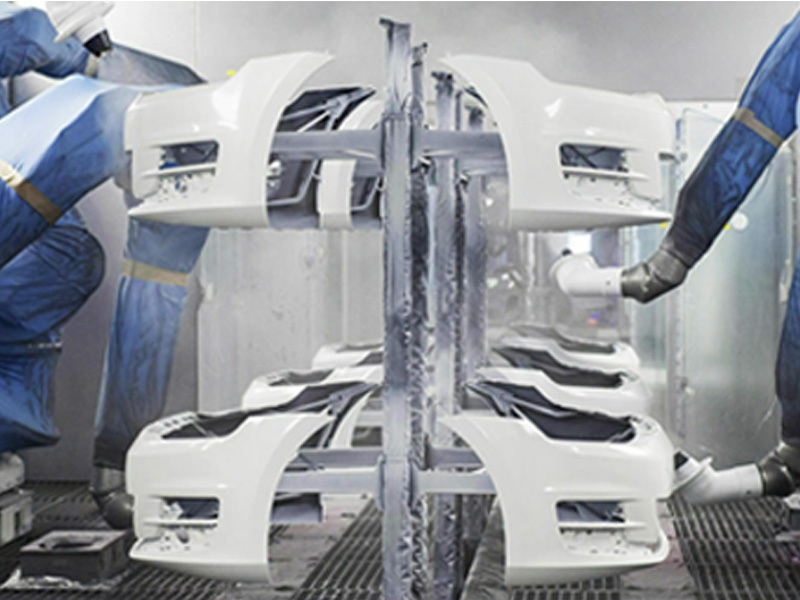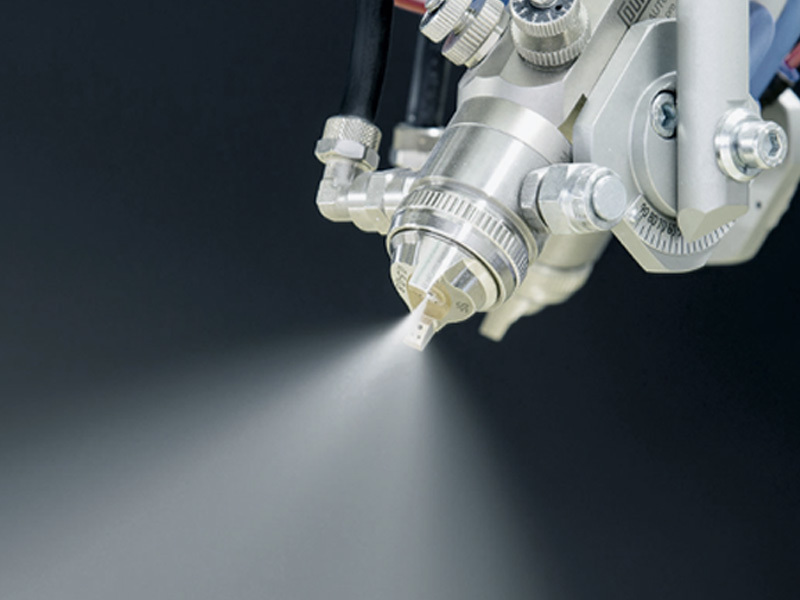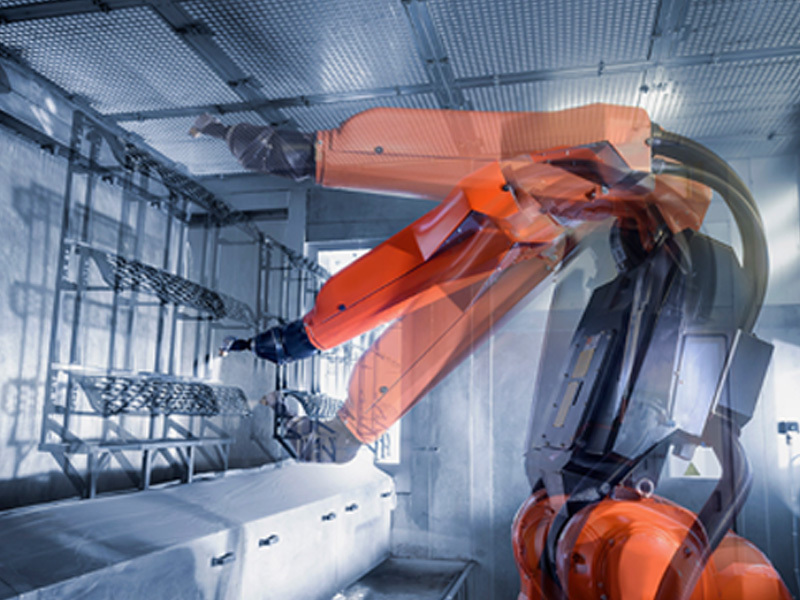Revolutionizing Auto Paint: The Role of Advanced Automotive Paint Robots
Release time:
2025-06-20
Revolutionizing Auto Paint: The Role of Advanced Automotive Paint Robots Table of Contents Introduction to Automotive Paint Robots The Impact of Paint Robots on Automotive Manufacturing Key Advantages of Using Paint Robots in the Automotive Industry Technological Advancements in Automotive Paint Robots The Painting Process Enhanced by Robots Challenges and Solutions in Aut

Revolutionizing Auto Paint: The Role of Advanced Automotive Paint Robots
Table of Contents
- Introduction to Automotive Paint Robots
- The Impact of Paint Robots on Automotive Manufacturing
- Key Advantages of Using Paint Robots in the Automotive Industry
- Technological Advancements in Automotive Paint Robots
- The Painting Process Enhanced by Robots
- Challenges and Solutions in Automotive Painting
- Future Trends in Automotive Paint Robots
- Frequently Asked Questions
- Conclusion
Introduction to Automotive Paint Robots
In the world of automotive manufacturing, precision and quality are paramount. **Advanced automotive paint robots** have emerged as a game-changer, revolutionizing the way vehicles are painted. These robots are not merely tools; they are sophisticated systems designed to deliver high-quality finishes while improving efficiency and reducing waste. As we explore the role of these robots, we will examine how they streamline the painting process, enhance the quality of paint application, and contribute to more sustainable manufacturing practices.
The Impact of Paint Robots on Automotive Manufacturing
The integration of paint robots in automotive manufacturing has significantly transformed traditional practices. **Paint robots** are designed to automate the labor-intensive and complex task of applying paint to vehicles. Their introduction has led to a number of impactful changes:
Enhanced Efficiency and Speed
One of the primary benefits of using paint robots is their ability to operate at high speeds with consistent quality. Unlike human painters, robots can work continuously without fatigue, increasing the overall throughput of paint applications. This efficiency not only accelerates production times but also allows for rapid deployment of new models in the market.
Consistent Quality and Precision
Precision is critical in automotive painting to ensure a flawless finish. **Automotive paint robots** are programmed to apply paint with meticulous accuracy, avoiding common issues such as drips, runs, and uneven coverage. The consistency achieved by these robots leads to a higher quality finish, reducing the need for rework and enhancing customer satisfaction.
Reduction in Material Waste
Advanced paint robots are equipped with technology that optimizes paint usage, minimizing waste. They utilize sophisticated algorithms to determine the exact amount of paint required for each vehicle, which not only conserves materials but also reduces costs. This environmentally friendly approach aligns with the growing demand for sustainable manufacturing practices.
Key Advantages of Using Paint Robots in the Automotive Industry
The advantages of incorporating paint robots into automotive manufacturing are manifold. Below are some of the key benefits that make these robots indispensable in today's automotive sector:
Improved Worker Safety
Automotive paint contains various chemicals that can pose health risks to human workers. By implementing **paint robots**, manufacturers can significantly reduce worker exposure to harmful substances, creating a safer workplace environment.
Flexibility and Adaptability
Modern paint robots are highly adaptable. They can be programmed to handle different types of vehicles and various paint formulations. This flexibility allows manufacturers to swiftly switch between models without extensive downtime, enhancing operational efficiency.
Data-Driven Insights
Advanced automotive paint robots are equipped with sensors and software that collect valuable data throughout the painting process. This data can be analyzed to identify trends, optimize processes, and improve overall quality control. Manufacturers can leverage these insights for continuous improvement and innovation.
Technological Advancements in Automotive Paint Robots
The evolution of **automotive paint robots** is closely linked to advancements in technology. Key innovations that have propelled these robots into the spotlight include:
AI and Machine Learning
Artificial intelligence (AI) and machine learning algorithms are increasingly being integrated into paint robots. These technologies enable robots to learn from previous painting processes, improving their precision and efficiency over time. Robots can adapt their techniques based on real-time data, resulting in superior paint application.
3D Printing Capabilities
The emergence of 3D printing technology has found its way into automotive painting. Robots can now create custom stencils and templates on-the-fly, allowing for intricate designs and patterns to be painted with ease. This capability opens up new avenues for personalization in vehicle aesthetics.
Enhanced Automation with IoT
The **Internet of Things (IoT)** has facilitated the development of smarter paint robots. By connecting robots to a central network, manufacturers can monitor performance in real-time, manage maintenance schedules, and optimize workflows. This connectivity enhances operational efficiency and reduces downtime.
The Painting Process Enhanced by Robots
Understanding how paint robots optimize the painting process is crucial. The typical automotive painting process has several stages, each of which benefits from robotic intervention:
Preparation
Before painting, vehicles undergo a thorough cleaning and surface preparation process. Robots equipped with washing and sanding capabilities can automate these tasks, ensuring a pristine surface for paint adhesion.
Application
The actual application of paint is where robots shine the most. Utilizing advanced spraying techniques, these robots can apply multiple layers of paint evenly and efficiently. They can also adjust their spraying patterns based on the vehicle’s shape and size, ensuring comprehensive coverage.
Drying and Curing
Post-application, the vehicle must be cured to ensure the paint adheres properly. Many modern robots are designed to work in tandem with drying ovens, allowing for seamless transitions between paint application and curing processes.
Challenges and Solutions in Automotive Painting
Despite the numerous benefits of automotive paint robots, challenges remain. Addressing these challenges is essential for maximizing their potential:
Initial Investment Costs
The upfront costs of acquiring and implementing paint robots can be significant. However, the long-term savings achieved through improved efficiency and reduced waste often outweigh these initial expenses. Manufacturers should consider the return on investment (ROI) when evaluating the feasibility of automation.
Maintenance and Technical Expertise
Paint robots require regular maintenance and technical expertise for optimal operation. Manufacturers need to invest in training personnel to manage and maintain robotic systems effectively. Collaborations with technology providers can also facilitate knowledge transfer and ensure smooth operations.
Integration with Existing Systems
Integrating paint robots into existing manufacturing systems may pose challenges. Manufacturers should approach integration strategically, prioritizing compatibility and scalability to ensure a smooth transition to robotic painting processes.
Future Trends in Automotive Paint Robots
As technology continues to advance, the future of automotive paint robots holds exciting possibilities:
Increased Personalization
With consumer demand for personalized vehicles on the rise, future paint robots will likely incorporate more advanced customization features. This could include the ability to create unique patterns and finishes, catering to the individual preferences of car buyers.
Sustainability Focus
The automotive industry is increasingly prioritizing sustainability. Future advancements in paint robots will likely lead to the development of eco-friendly paint formulations and processes that further minimize environmental impact.
Collaboration with Other Automated Systems
We can expect automotive paint robots to work in synergy with other automated manufacturing systems, such as assembly lines and logistics. This collaboration will create a more streamlined and efficient manufacturing ecosystem, further enhancing overall productivity.
Frequently Asked Questions
1. What are the primary benefits of using automotive paint robots?
The primary benefits include enhanced efficiency, consistent quality, reduced material waste, improved worker safety, and flexibility in manufacturing processes.
2. How do automotive paint robots ensure precision in paint application?
Automotive paint robots utilize advanced programming and sensors to apply paint with meticulous accuracy, minimizing errors such as drips and uneven coverage.
3. Are paint robots cost-effective for small manufacturers?
While the initial investment can be significant, the long-term savings achieved through improved efficiency and reduced waste often make paint robots a cost-effective solution for manufacturers of all sizes.
4. How do advancements in technology impact the future of paint robots?
Advancements such as AI, machine learning, and IoT enhance the capabilities of paint robots, leading to improved efficiency, precision, and flexibility in manufacturing processes.
5. What challenges do manufacturers face when implementing paint robots?
Challenges include high initial investment costs, the need for maintenance and technical expertise, and integration with existing manufacturing systems. Addressing these challenges is crucial for successful implementation.
Conclusion
The introduction of advanced automotive paint robots is revolutionizing the automotive industry, enhancing efficiency, quality, and sustainability in vehicle painting processes. As technology continues to evolve, these robots will play an increasingly vital role in the future of automotive manufacturing. By leveraging the benefits of automation and embracing innovative solutions, manufacturers can position themselves at the forefront of the industry, meeting the ever-changing demands of consumers while maintaining high standards of quality and safety.











